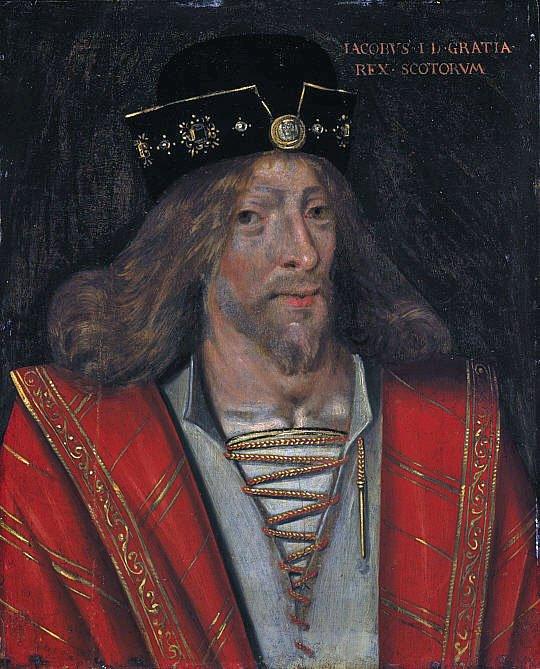Search in Perth for remains of murdered James I
- Published

A monument marks the area where James I's remains are believed to be buried
A plan to search for the tomb of a Scottish king buried in Perth nearly 600 years ago has been unveiled.
It will be part of a project to create a major visitor attraction in the city using virtual reality to tell the story of James I and the Stewart monarchs.
James I was assassinated in Perth in 1437 and later buried at the Charterhouse monastery.
But the priory was destroyed in the reformation 100 years later and no-one is sure of the grave's exact location.
The monastery where he was buried was built on his orders and was part of his great plans for Perth.
Historians believe he wanted to create a complex on the scale of Westminster and move St Andrews University to the city to compete with Oxford.
Dr Lucy Dean, from the University of the Highlands and Islands, told BBC Scotland: "Thirteen out of 18 of James' parliaments take place in Perth. He is centralising his government here.
"I'm not sure whether Perth would have been the capital but it was definitely in the running for being the capital. [His] murder halted that idea in its tracks."
James I was assassinated on 4 February 1437 while he was in the royal apartments at the Blackfriars monastery in Perth.
After a group of 30 conspirators were let into the building he tried to hide in a sewer, but he was trapped and killed by Sir Robert Graham.
A pub and sheltered housing accommodation now stands on the site of his death.

James I was stabbed to death in 1437
The area where he died is marked with a stone monument.
Archaeologist David Bowler, who explored the site in the 1980s, said he was "very excited" by the plans to find the king's tomb.
"It's something we've all been thinking about in Perth for many, many years," he said.
"We've all known about the Carthusian friary and we want to know a bit more about where it is."
Leaders of this project, which also includes a "virtual museum" depicting Medieval Perth, hope the city could benefit from the discovery of the tomb in the same way Leicester did when Richard III's remains were found.
Richard Oram, professor of Medieval history at the University of Stirling, said: "If we were to actually locate where the royal tomb was within this complex - we saw what that did to Leicester with the rediscovery of Richard III.
"A lot more people know Richard III than James I but we're looking to try and change that. So if we were successful that would be a huge added bonus to the project."